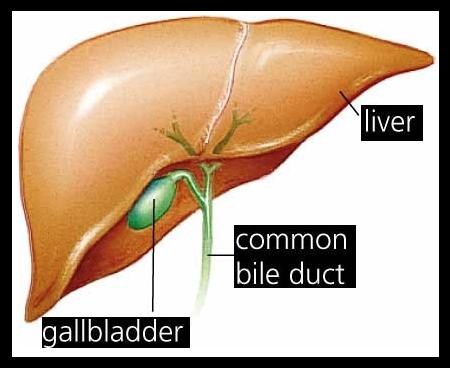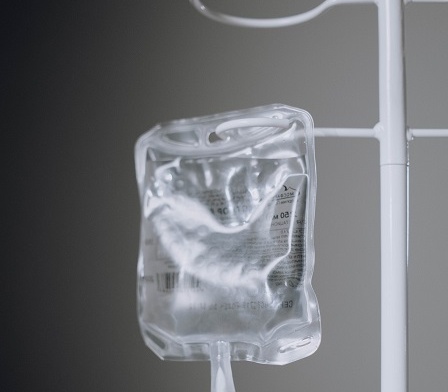If you’ve ever had sudden, sharp pain in your upper-right abdomen—especially after eating fatty foods—you might be experiencing symptoms of gallstones. They’re incredibly common, but many people don’t know what causes them, how they’re treated, or what to expect in terms of after surgery care following gallbladder removal.
In this guide, we’ll explain what the gallbladder does, discuss how gallstones form, outline their common symptoms and treatment options, and highlight key strategies for effective after surgery care for a safe, comfortable recovery.
What Is the Gallbladder, and What Does It Do?
Your gallbladder is a small, pear-shaped organ located just beneath your liver, and its main function is to store and release bile—a digestive fluid essential for breaking down dietary fats. When you consume fatty foods, your gallbladder contracts, pushing bile into your small intestine to help digest the fats.
Interestingly, you can live a healthy and active life without your gallbladder. If removed through gallbladder surgery (cholecystectomy), your liver continues producing bile, which flows directly into the digestive system. Although this continuous bile flow may require minor dietary adjustments, most people adapt without any long-term issues.
Gallstone Causes and Risk Factors
Gallstones, medically known as cholelithiasis, form when there are imbalances in the substances that make up the bile, usually cholesterol or bilirubin. These stones can vary greatly in size and number, from tiny grains to the size of a golf ball.
Common risk factors associated with gallstones include:
- Gender and Hormones: Women, especially if they’re pregnant or on hormonal birth control, face a higher risk.
- Age: Gallstones are more common in adults over 40, even more so in those over 60.
- Family History: If you have a family history of gallstones, you’re much more likely to get them.
- Obesity and Rapid Weight Loss: Being overweight or losing weight too quickly throws your bile chemistry out of whack, which can cause gallstones.
- Dietary Habits: High-fat, cholesterol-rich, or fiber-poor diets are more conducive to forming gallstones.
- Medical Conditions: Diabetes, metabolic syndrome, Crohn’s disease, and certain blood disorders make you more susceptible to gallstones.
When you know these risk factors, you can make informed lifestyle choices to reduce your risk.
How to Recognize Gallstones Early
It’s possible for gallstones to exist for years without causing any noticeable symptoms. However, when they do cause problems, symptoms typically include:
- Intense pain in the upper-right side of the abdomen.
- Pain radiating to the back or right shoulder blade.
- Nausea, vomiting, indigestion, or bloating after eating fatty foods.
- Jaundice (yellowing of the skin or eyes), indicating bile duct blockage.
If these symptoms appear, especially after eating high-fat meals, seek medical care promptly to prevent serious complications.
Treatment Options for Gallstones
Gallstones treatment largely depends on the severity of symptoms and overall health status. Treatments can range from watchful waiting to surgery:
- Watchful Waiting: If gallstones aren’t causing symptoms, there’s no real reason to intervene. In these cases, doctors recommend periodic monitoring instead of drastic intervention.
- Gallbladder Surgery (Cholecystectomy): When medical intervention is necessary, surgical removal of the gallbladder is the most common and definitive gallstone treatment, usually done laparoscopically.
- Medication Therapy: Certain medications can dissolve cholesterol-based gallstones. However, this approach is slow, can take months, and isn’t always effective.
Your healthcare provider will recommend the most appropriate treatment based on your condition and overall health.
Essential After Surgery Care for Gallbladder Surgery Recovery
If you have your gallbladder removed, after surgery care is necessary to make recovery comfortable and minimize potential complications. Understanding what to expect after gallbladder surgery and knowing how to care for yourself plays a huge role in how quickly you return to your regular lifestyle.
Cholecystectomy Recovery Tips
Managing pain is critical after gallbladder surgery. Typically, mild discomfort lasts only a few days and can be relieved with prescribed medication, heating pads, gentle stretching, and rest. Effective gallbladder pain relief techniques, like short walks and warm compresses, reduce discomfort while speeding your recovery.
Keeping Your Incisions Healthy
Proper wound care after surgery avoids infections. Your doctor will provide specific instructions on cleaning and dressing surgical sites. Look for signs of infection—like redness, unusual discharge, or swelling—and contact your healthcare provider if any appear. Sticking to your surgeon’s instructions can significantly reduce infection risk, leading to quicker healing.
Eating Right After Gallbladder Removal
Focus on smaller meals and foods low in fat right after the surgery, gradually reintroducing healthy fats like nuts, avocado, and olive oil as your body acclimates. Read nutrition labels and incorporate plenty of fiber-rich foods (whole grains, vegetables, fruits) to help with digestion and minimize discomfort. Staying hydrated and spreading meals throughout the day can also improve digestive comfort during recovery.
Returning to Daily Activities After Surgery
Moderate physical activity, like short daily walks, promotes circulation, speeds recovery, and reduces risks of complications such as blood clots or constipation. Gradually increase your activity according to your doctor’s recommendations. Many patients can resume regular activities, such as driving or returning to work, within one to two weeks after a laparoscopic surgery.
Don’t Overlook Gallstones Complications
Neglecting gallstone symptoms is risky, as they can escalate into severe complications quickly. Untreated gallstones may cause acute cholecystitis (gallbladder inflammation), cholangitis (bile duct infection), pancreatitis, or even liver damage. These conditions require urgent medical care and can become life-threatening if ignored.
For instance, acute pancreatitis occurs if a gallstone blocks pancreatic fluid flow, leading to serious abdominal inflammation requiring hospitalization. Early diagnosis and prompt gallstones treatment dramatically reduce these risks.
Gallbladder and Gallstone FAQs
How long does recovery typically take after gallbladder surgery?
Most people recover within 1–2 weeks after laparoscopic gallbladder surgery. Traditional open surgery requires approximately 4-6 weeks. Adhering to the after surgery care guidelines recommended by your doctor helps speed your recovery.
Can gallstones come back after surgery?
Once your gallbladder is removed, gallstones won’t continue to form. In rare cases, stones may develop in the remaining bile ducts. Maintaining a healthy diet and lifestyle reduces this risk significantly.
How do I manage digestive issues after gallbladder surgery?
Initially, digestive issues like mild diarrhea or bloating are common. Smaller, more frequent meals, lower fat intake, and increasing fiber consumption typically help alleviate these symptoms within a few weeks.
When should I contact my doctor after gallbladder surgery?
Reach out immediately if you notice increased abdominal pain, fever, chills, unusual incision drainage, severe nausea or vomiting, or jaundice. Prompt medical intervention keeps your recovery safe and efficient.
Is digestive discomfort normal after gallbladder surgery?
Yes, mild digestive issues can occur initially, such as bloating or loose stools. This typically improves within weeks as your body adapts. Eating smaller meals and incorporating fiber-rich foods can alleviate discomfort quickly.
Why Proper After Surgery Care Matters
Understanding gallstones, their symptoms, and available treatment options empowers you to take proactive steps toward better health. If you undergo gallbladder removal, the most effective way to guarantee a swift, smooth recovery is by listening to your doctor’s suggestions for after surgery care. By managing pain carefully, maintaining incision hygiene, adjusting your diet, and gently increasing physical activity, you’ll set yourself up for a comfortable recovery.
With proper after surgery care, you can confidently transition back into your everyday life.
Resources:
https://surgicaloncology.ucsf.edu/condition/gallstones
https://www.hopkinsmedicine.org/health/conditions-and-diseases/gallstones




